When it comes to the food of Hanoi, phở stands out as the most iconic dish, a true emblem of the city’s rich culinary tradition. More than just a meal, phở is a symbol of Hanoi itself—simple, refined, and deeply intertwined with the daily lives and memories of its people. Whether enjoyed at a humble street corner stall or in a refined restaurant, phở maintains its timeless place in the hearts of both locals and visitors.
The Origins and Cultural Significance of Phở
Phở traces its origins back to the early 20th century in Hanoi, where it evolved from a blend of French influences and traditional Vietnamese broths. Over time, this dish became a vital part of Hanoi’s street food scene and its everyday life. The combination of a rich, clear broth, tender meat (usually beef or chicken), and a perfect balance of herbs, rice noodles, and seasonings has made phở a dish that is both beloved and deeply ingrained in the city’s culture.
For locals, phở is not merely a dish; it’s a ritual. Morning meals often start with a hot bowl of phở, served in bustling markets or small street shops that fill the air with the inviting aroma of simmering beef bones and fresh herbs. For visitors, trying phở in Hanoi is a cultural experience—a chance to taste the city’s history and feel its pulse through every slurp.
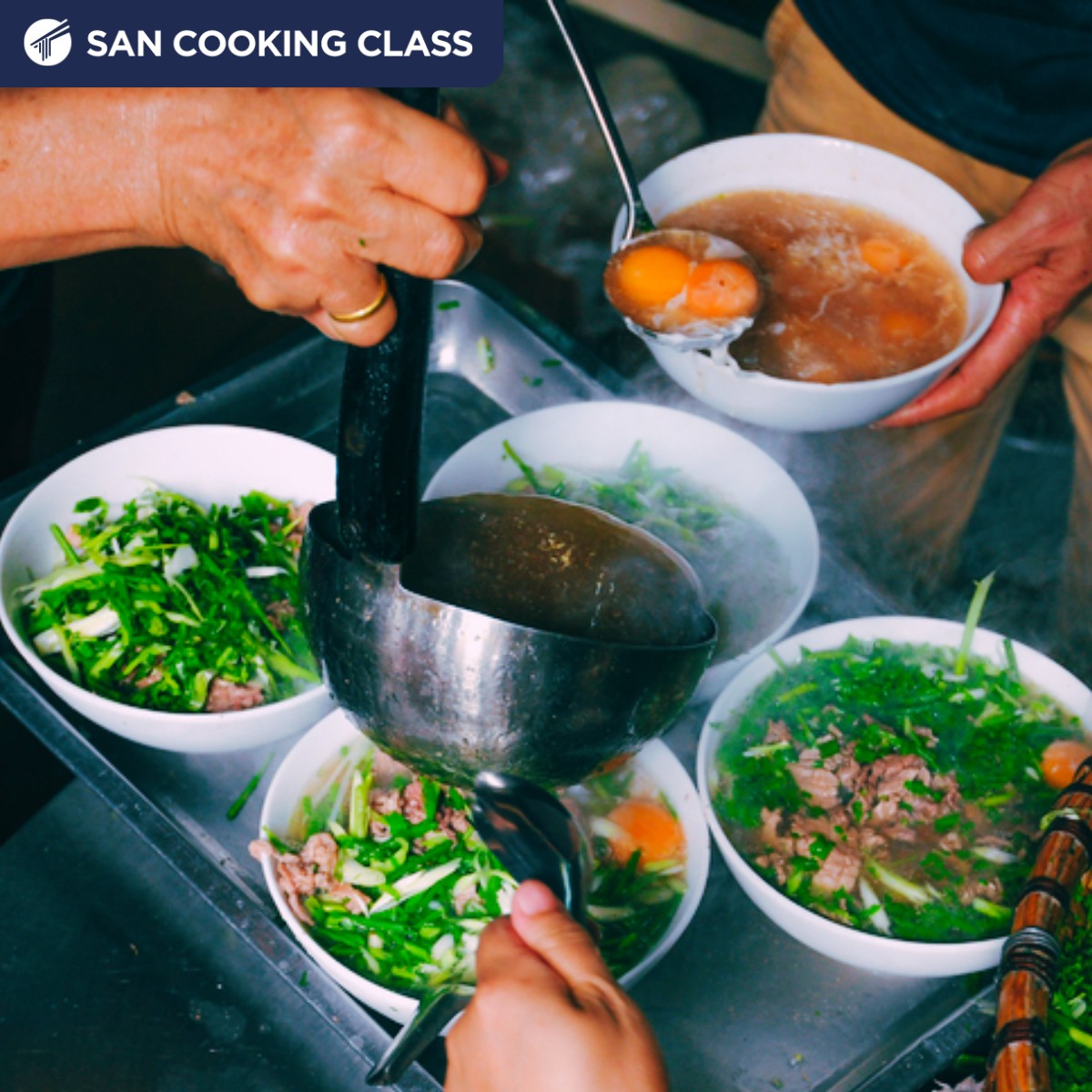
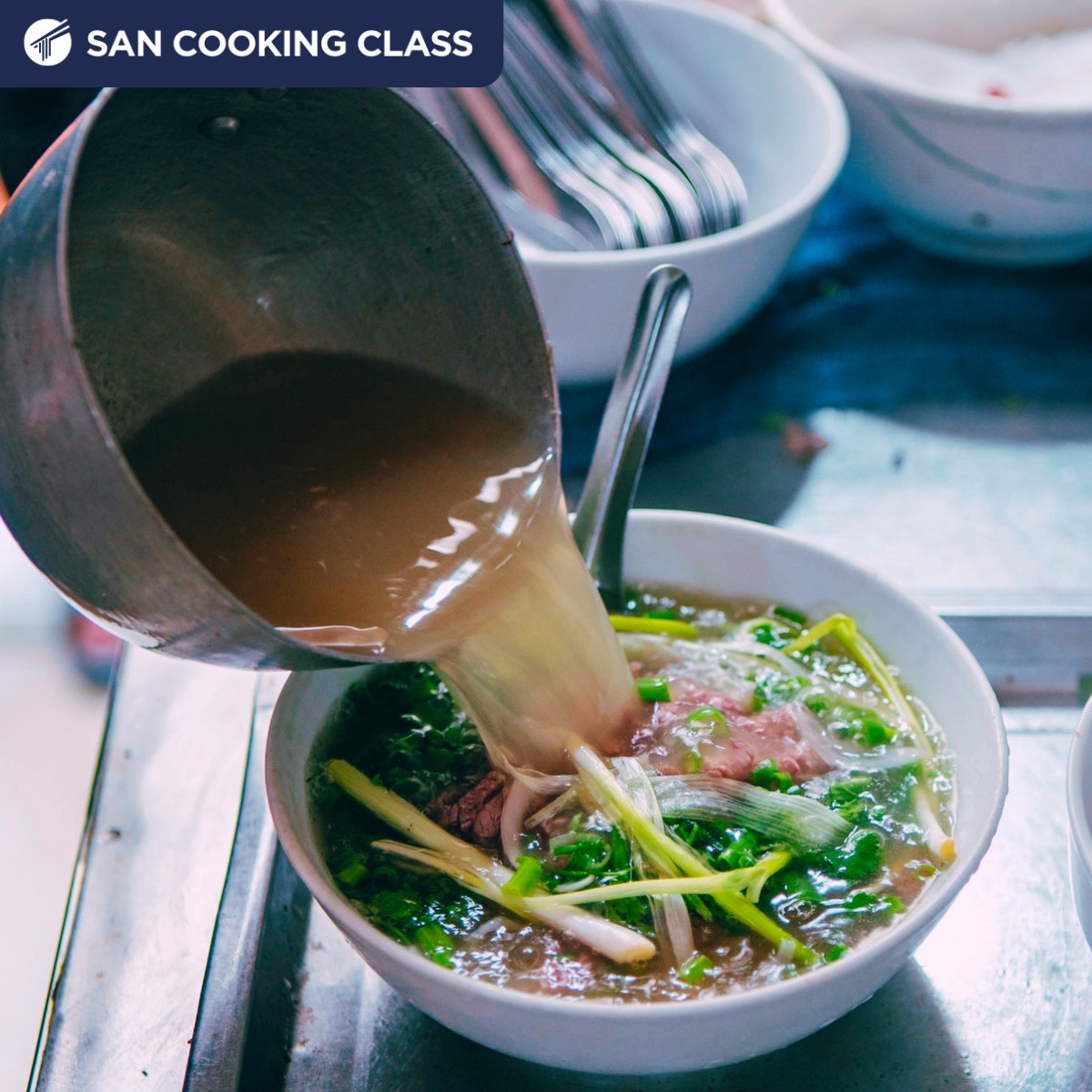
The Art of Making Phở
Making a perfect bowl of phở is a time-honored craft. The key to a great phở lies in the broth. The broth is made by simmering beef bones for several hours, sometimes even overnight, to extract the deep, rich flavors. Spices such as star anise, cinnamon, and cloves are added to create a fragrant, slightly sweet undertone that complements the savory flavors of the meat. The addition of ginger and onions, charred and sautéed to bring out their sweetness, adds complexity and balance to the broth.
The noodles, thin and delicate, are made from rice flour and should be served just the right texture—not too soft and not too firm. The beef, typically thinly sliced, is placed into the hot broth, allowing it to cook just enough without becoming tough. The dish is then garnished with fresh herbs like cilantro, mint, and Thai basil, along with lime wedges and bean sprouts, giving the dish an aromatic freshness that brightens the rich flavors.
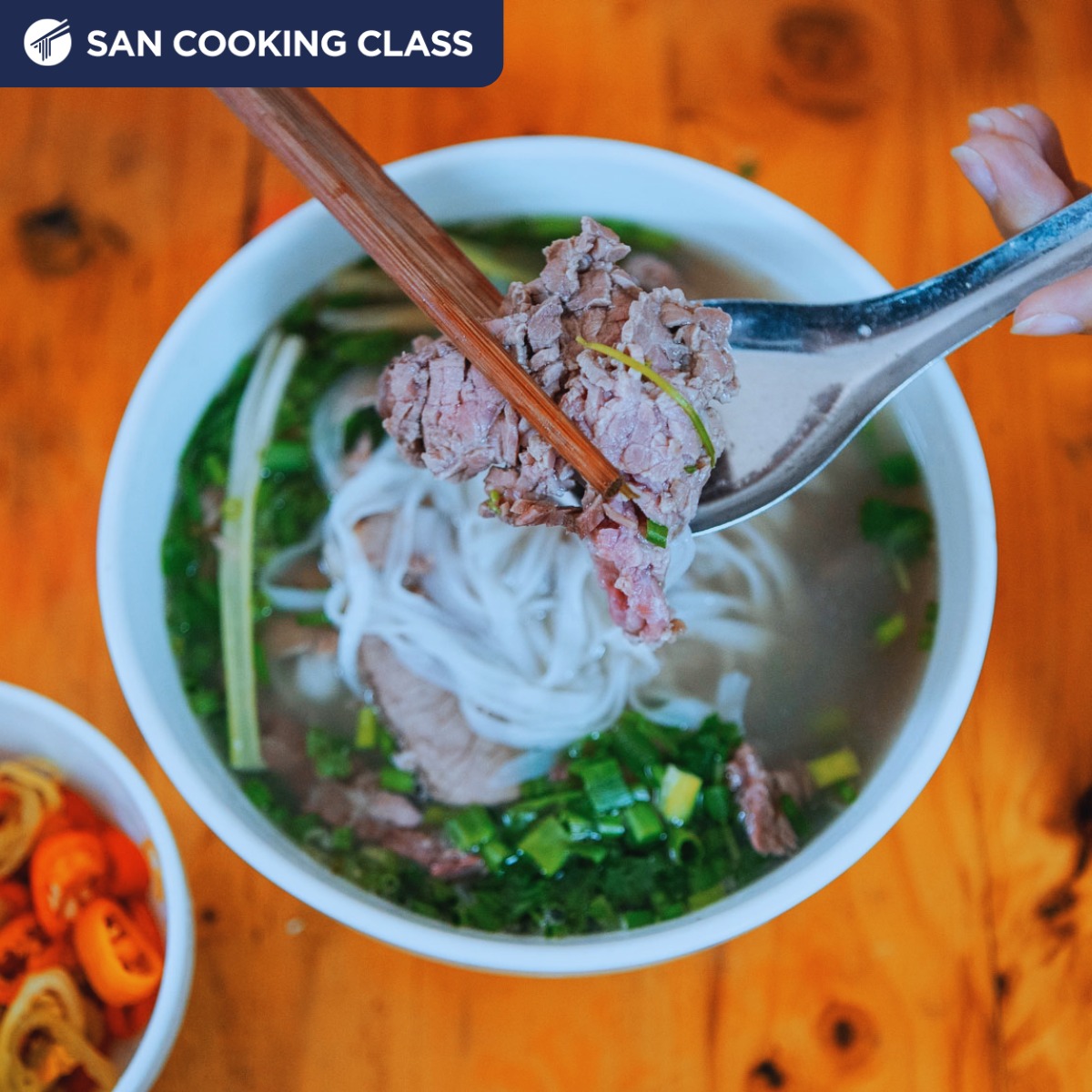
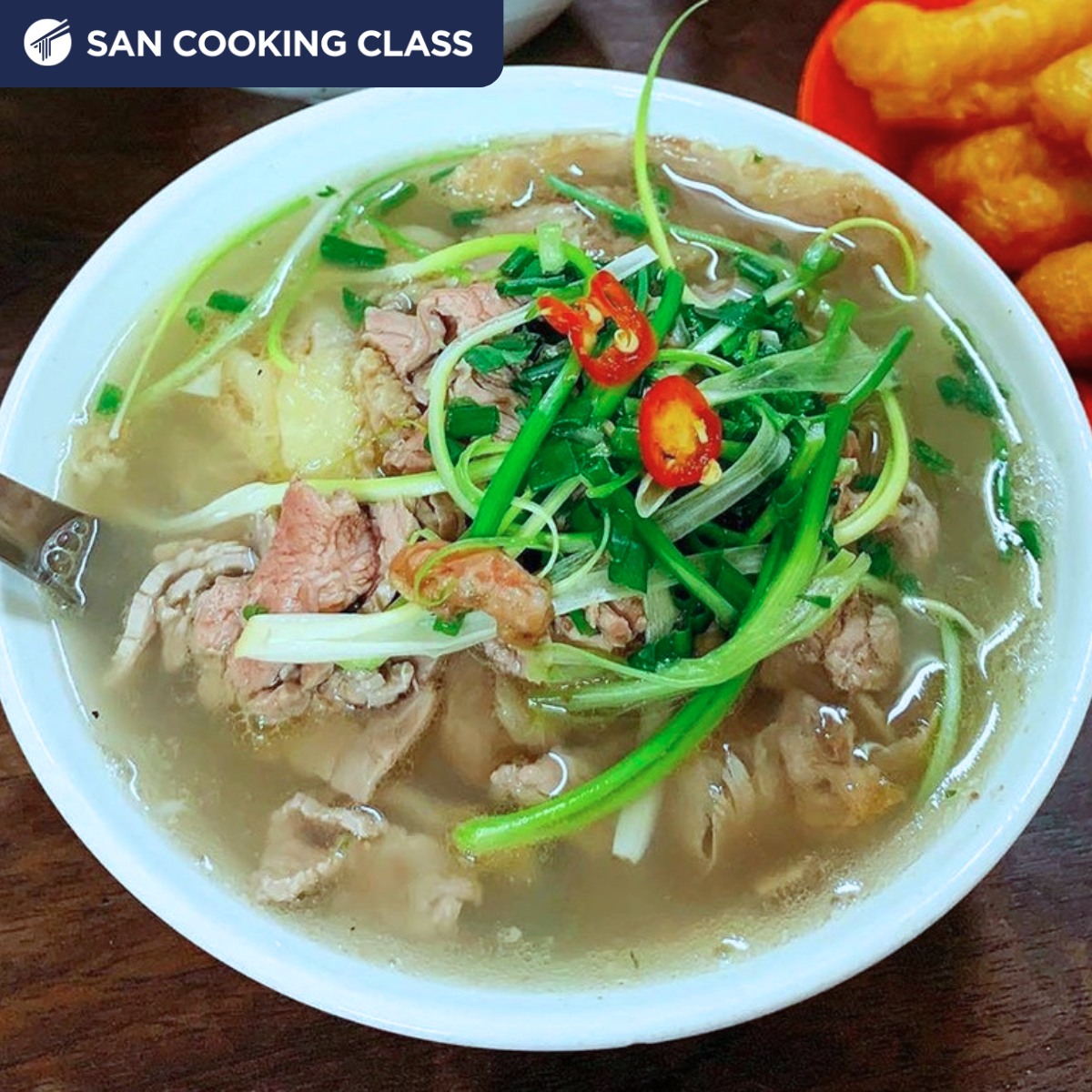
The Variations of Phở
Although the version of phở most associated with Hanoi is phở bò (beef pho), there are also regional variations, such as phở gà (chicken pho). While the fundamental concept remains the same, the flavor profiles can vary. In southern Vietnam, for example, the broth tends to be sweeter, and the dish is served with more fresh herbs and chili. In Hanoi, the broth is often clearer and more savory, focusing on the purity of the beef’s flavor.
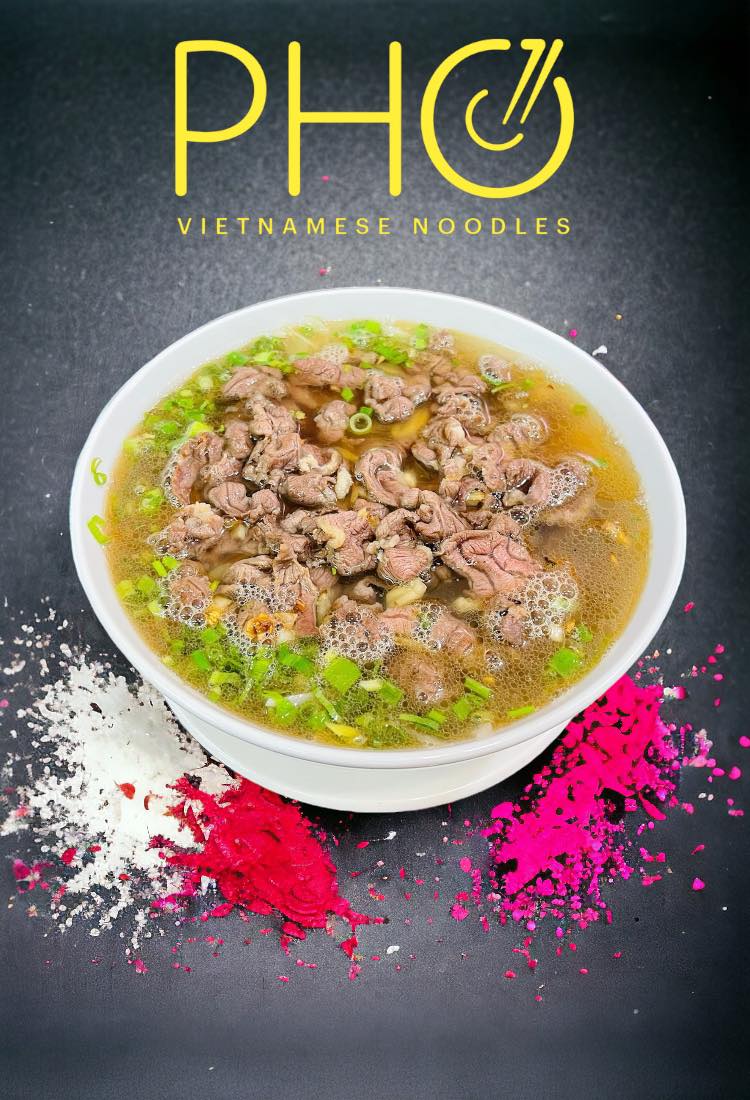
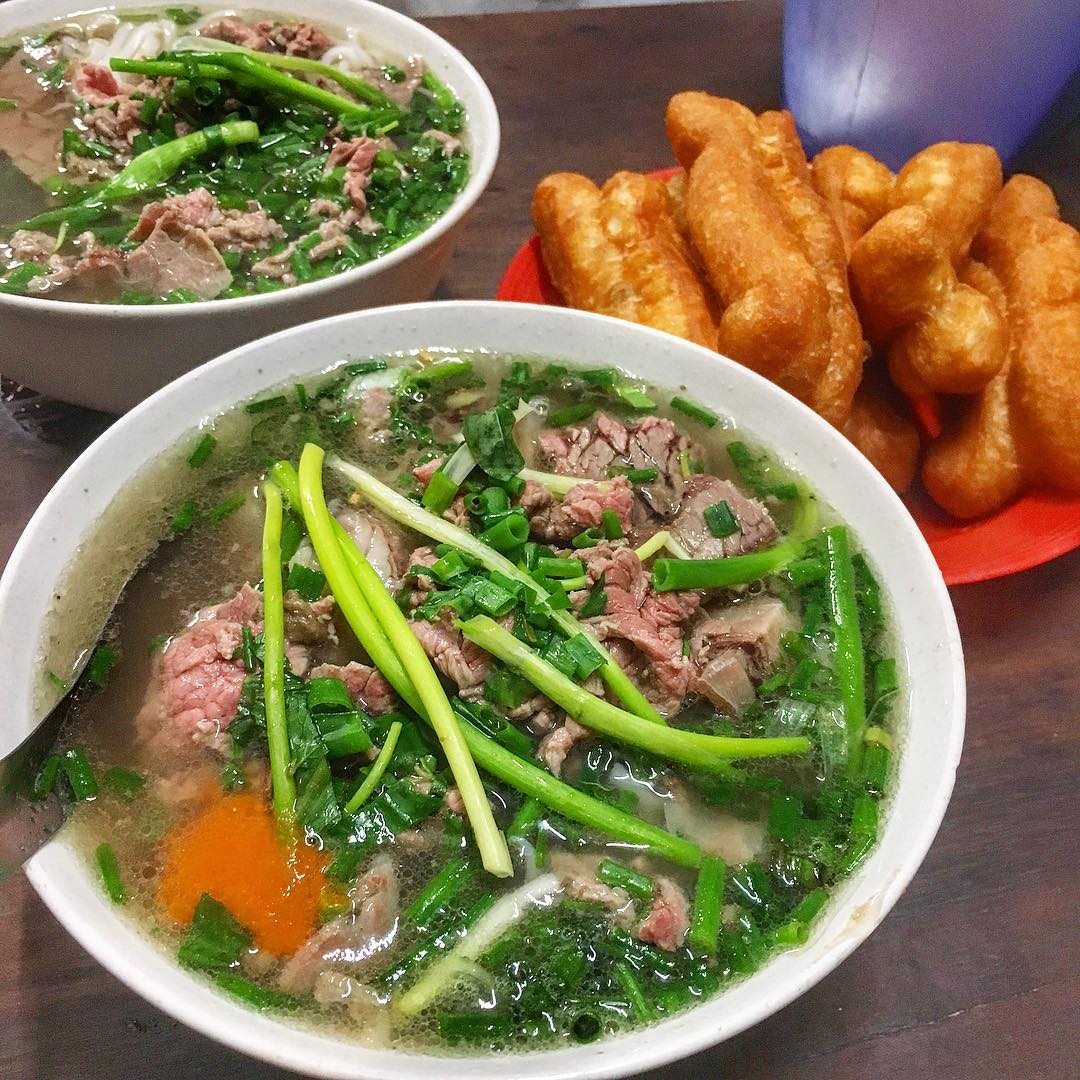
Where to Try the Best Phở in Hanoi
If you’re in Hanoi, trying phở is an absolute must. From bustling street food stalls to more upscale restaurants, here are a few places where you can enjoy this iconic dish:
- Phở Gia Truyền Bát Đàn – Known for its rich, aromatic broth and perfectly sliced beef, this is a local favorite. ( 49 Bát Đàn Street, Cửa Đông, Hoàn Kiếm, Hanoi, Vietnam.)
- Phở Thìn – A Hanoi institution, this shop is famous for its unique style of phở with stir-fried beef. (61 Đinh Tiên Hoàng Street, Lý Thái Tổ, Hoàn Kiếm, Hanoi, Vietnam. )
- Phở 10 Lý Quốc Sư – This well-known spot serves up a delicious, traditional bowl of phở bò, with a broth that is rich yet clear. ( Lý Quốc Sư Street, Hàng Trống, Hoàn Kiếm, Hanoi, Vietnam.)
Take the time to explore Hanoi’s iconic dish, Phở, which has earned its place as a symbol of the capital. With just one taste, you’ll experience a perfect blend of flavors, history, and culture, each bowl telling a story of Hanoi’s unique culinary heritage. Whether enjoyed on bustling streets or in cozy eateries, Phở Hà Nội continues to capture the essence of the city.